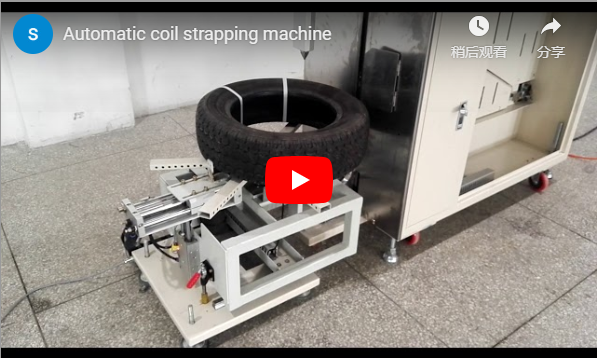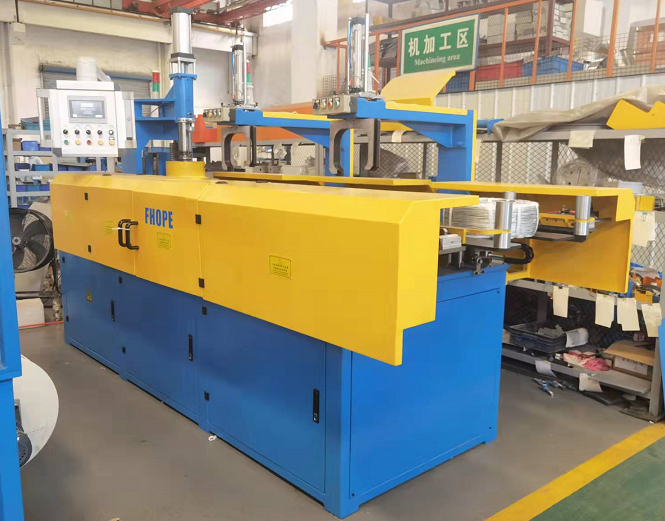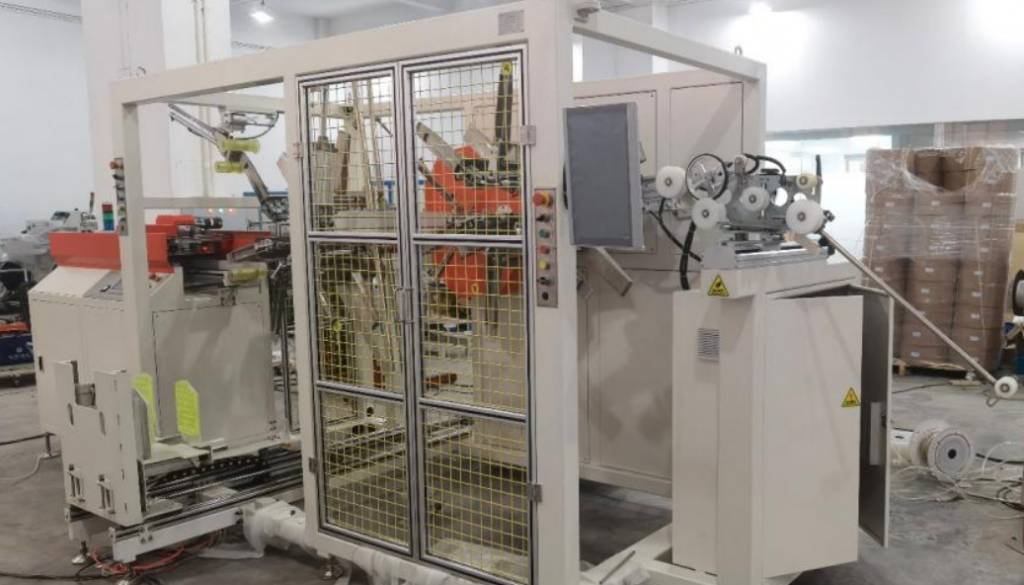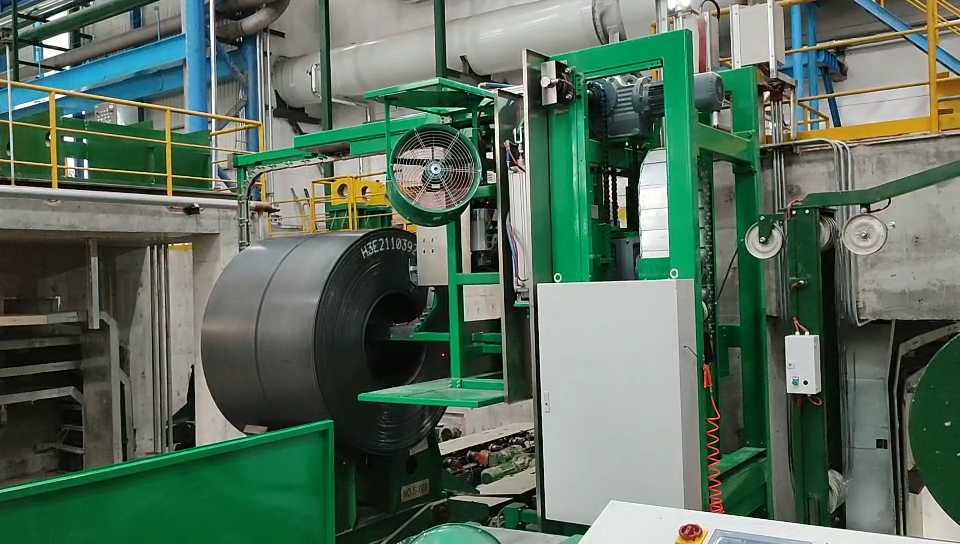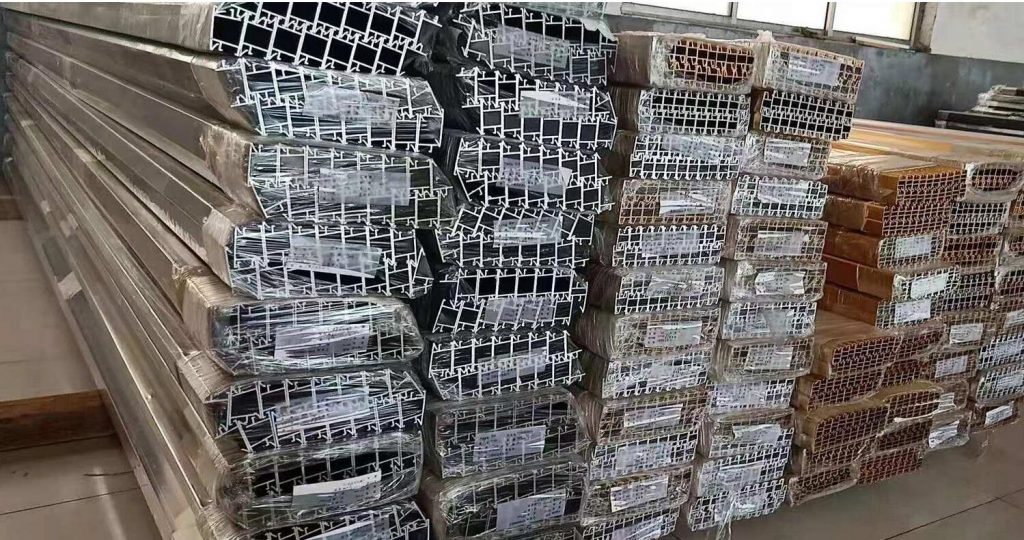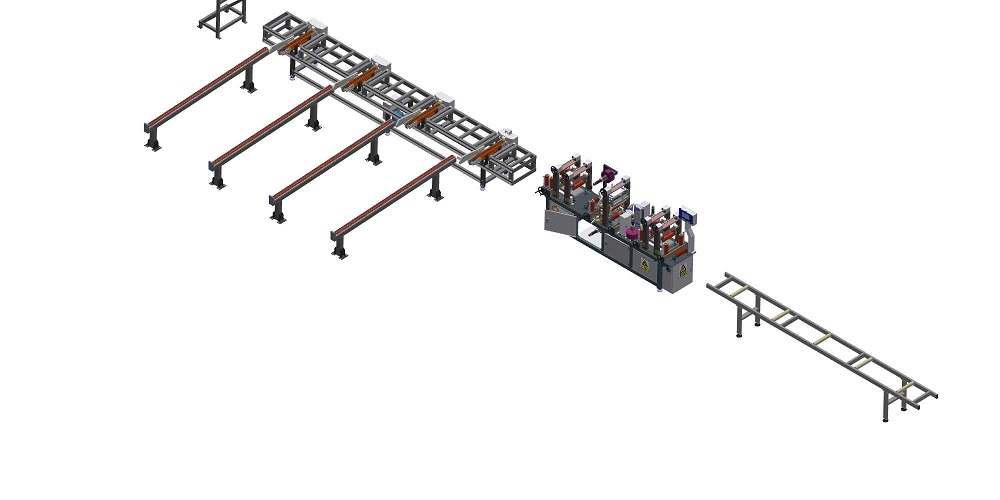Optimizing Coil Securement: Deep Dive into the Automated Radial PET Strapping Machine
Introduction: Addressing Modern Coil Handling Challenges
The handling and transportation of heavy industrial coils, particularly those made of steel, aluminum, or copper, present significant logistical and safety challenges. Ensuring load stability and preventing damage during transit is paramount. The Automated Radial Strip Coil Strapping Machine utilizing high-strength PET (Polyethylene Terephthalate) strapping emerges as a critical technology in addressing these needs, offering enhanced efficiency, safety, and reliability in demanding industrial environments. This system automates the process of securing straps radially around coils, a method proven effective for maintaining coil integrity.
Operational Principles and Technological Integration
Engineered for the high-throughput demands of the metals and manufacturing sectors, an Automated Radial Strip Coil Strapping Machine using PET represents a sophisticated integration of mechanical and control systems. The process typically involves:
- Coil Positioning: Coils are automatically or semi-automatically positioned onto a rotating platform or indexed into the strapping station. Precision alignment is crucial for accurate strap placement.
- Strap Feeding: The PET strap is fed from a dispenser through a strap track or chute that encircles the coil radially. Advanced feeding mechanisms, sometimes drawing on designs outlined in patents focusing on minimizing strap jams (e.g., related concepts in US Patent 6,789,475 B2 concerning strap feeding improvements), ensure reliable delivery.
- Tensioning: Once the strap is positioned, a high-torque tensioning unit applies controlled force. Modern systems often feature variable tension control, adjustable via the PLC, to accommodate different coil types and customer requirements. Research highlights that consistent tensioning is vital for load stability, preventing issues like coil telescoping or loosening during dynamic transport conditions.
- Sealing: The strap ends are securely joined, typically using friction-weld sealing technology. This method provides high joint efficiency (often exceeding 80% of strap break strength), creating a durable bond without the need for metal seals, as discussed in packaging technology reviews comparing sealing methods.
- Cutting and Retraction: The strap is cut, and the feeding mechanism retracts, preparing for the next cycle or rotation for multi-strap applications.
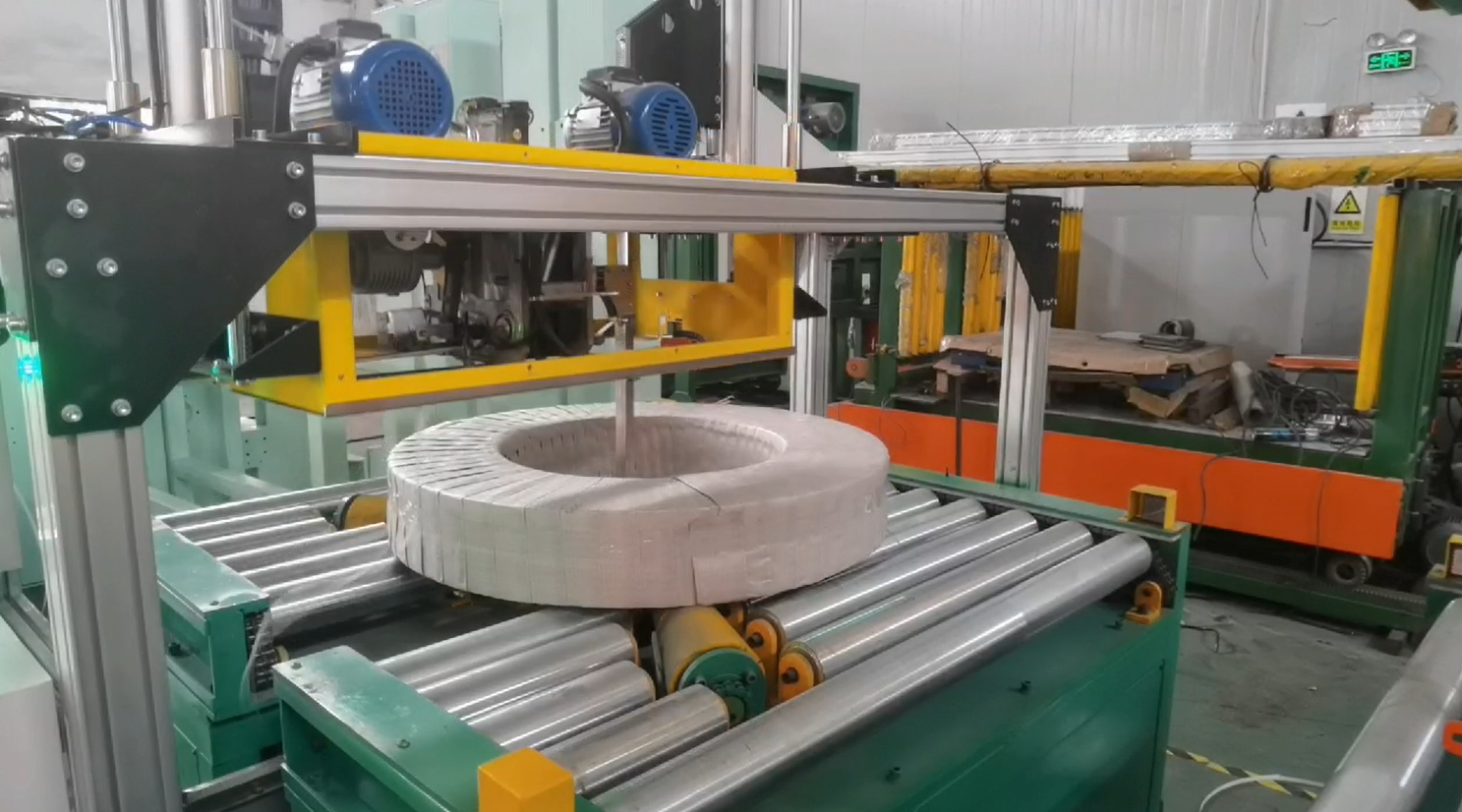
steel coil strapping machinery
The entire operation is orchestrated by a Programmable Logic Controller (PLC), usually interfaced with a touchscreen HMI (Human-Machine Interface), allowing for easy parameter adjustments, operational monitoring, and diagnostic feedback.
Key Advantages of Automated Radial PET Strapping
Implementing this automated solution yields substantial benefits across operational metrics:
- Enhanced Safety: Automating the strapping process significantly reduces manual handling of heavy coils and strapping tools, mitigating risks of musculoskeletal injuries and accidents associated with manual strapping operations, a key focus in industrial safety guidelines.
- Improved Load Stability: Consistent radial strap placement and precise tensioning ensure coils are uniformly secured, minimizing the risk of shifting, unwinding, or telescoping during handling and shipping. This aligns with best practices for load securement outlined by industry bodies like the Association of American Railroads (AAR) for certain transport modes.
- Increased Throughput: Automation dramatically reduces cycle times compared to manual or semi-automatic methods. A typical cycle time of around 45 seconds per strap enables higher processing volumes, crucial for large-scale production facilities.
- Cost Efficiency: Reduces direct labor costs associated with manual strapping. Furthermore, the use of PET strapping can offer cost savings compared to steel strapping in certain applications, coupled with reduced product damage, contributing to a lower total cost of ownership.
- PET Strapping Benefits: PET straps offer high tensile strength, excellent elongation and recovery properties (maintaining tension even if the coil settles), resistance to rust, and are generally safer to handle than steel straps (no sharp edges). They are also often considered more environmentally friendly due to recyclability.
- Process Consistency: Automation eliminates variability inherent in manual processes, ensuring every coil is strapped according to predefined specifications, enhancing quality control.
Core Technical Specifications
While specific configurations vary, typical parameters for heavy-duty automated radial PET strapping systems include:
- Machine Type: Automated Radial Coil Strapping Machine
- Strap Material: PET (Polyethylene Terephthalate)
- Coil Diameter Range: Typically accommodates diameters from 800mm up to 1600mm (or wider ranges available)
- Strap Width Compatibility: 12mm to 32mm, depending on application requirements
- Tensioning Force: Adjustable, often reaching up to 7000N or higher for heavy-duty applications
- Control System: PLC with user-friendly touchscreen HMI
- Average Cycle Time: Approximately 45 seconds per strap (can vary based on coil size and strap path)
- Power Requirements: Commonly 480V, 60Hz, 3-Phase (adaptable to regional standards)
- Approximate Footprint: (Example) Length: 5000mm; Width: 3600mm; Height: 2500mm
- Safety Integration: Equipped with emergency stops, safety interlocks, and protective guarding compliant with industrial safety standards.
Disclaimer: The parameters listed above are representative examples and may not precisely match the specific equipment shown in the video. For exact machine specifications tailored to your application, please contact us directly.
Critical Industry Applications
The Automated Radial Strip Coil Strapping Machine by PET provides essential packaging solutions across various heavy industries:
- Steel Manufacturing & Service Centers: Indispensable for securing large, heavy steel coils (hot-rolled, cold-rolled, galvanized, etc.). Proper radial strapping prevents edge damage and coil telescoping during storage and shipment, ensuring material quality upon arrival at the customer or next processing stage. Industry publications frequently cite secure packaging as vital for maintaining profitability in the competitive steel market.
- Aluminum Processing Facilities: Aluminum coils, often requiring careful handling to prevent surface damage, benefit significantly from consistent, automated strapping. The controlled tension ensures securement without damaging softer aluminum surfaces, critical for applications in automotive, aerospace, and construction.
- Copper Mills and Tubing Manufacturers: Securing coils of copper wire, strip, or tubing is vital for safe and efficient logistics. The machine's ability to handle various coil dimensions and apply appropriate tension ensures compact, stable bundles, facilitating easier handling and reducing material loss or damage.
Conclusion: A Strategic Investment in Packaging Automation
The Automated Radial Strip Coil Strapping Machine using PET strapping represents more than just packaging equipment; it's a strategic investment in operational efficiency, workplace safety, and product integrity. By automating a physically demanding and critical process, manufacturers and distributors in the metals sector can achieve higher throughput, reduce operational costs, enhance load security, and meet the rigorous demands of modern industrial logistics. As highlighted in industry reports focusing on warehouse and factory automation, such systems are increasingly becoming standard for competitive and safe operations.

